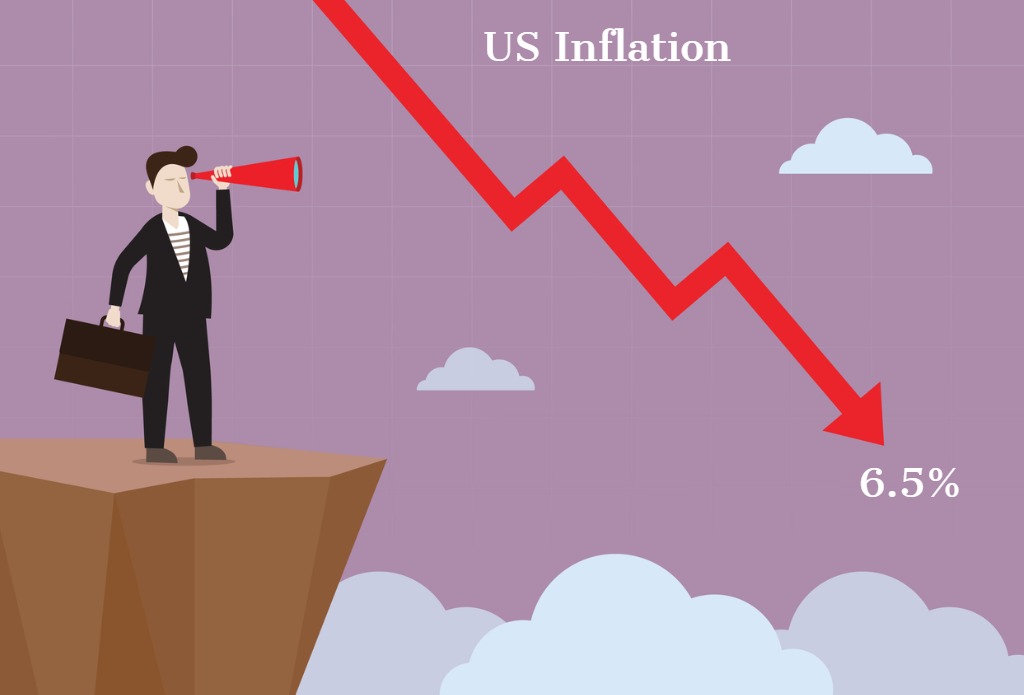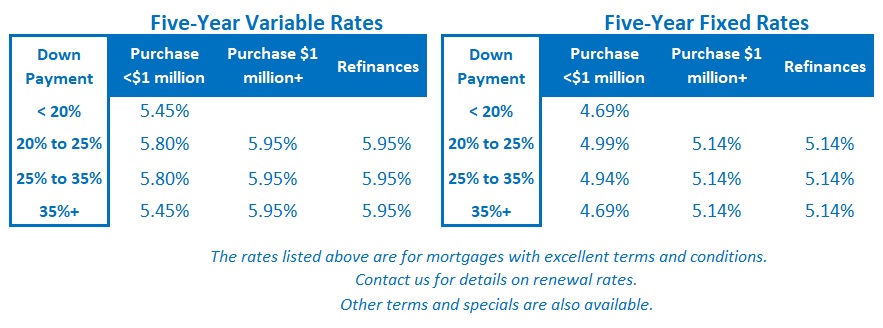Mortgage-Rate Forecast and Predictions for 2023
January 9, 2023Will the Bank of Canada Raise Again This Week?
January 23, 2023 Last week we received the latest US inflation data, for December, and the results came in at or a little below consensus forecasts.
Last week we received the latest US inflation data, for December, and the results came in at or a little below consensus forecasts.
If you are trying to figure out where Canadian mortgage rates are headed, you should pay close attention to what happens in the US. Our fixed mortgage rates move in near lockstep with their US Treasury equivalents, and the Bank of Canada’s (BoC) policy rate moves in the same direction as the Fed funds rate over time (although not necessarily with equal precision).
The same is true in many other countries. The US dollar is the world’s reserve currency, and as such, the Fed funds rate is the base lending rate for a huge swath of other interest rates across the globe. Given that the Fed is laser focused on bringing down inflation and restoring price stability above all else, the US inflation releases contain the most closely watched data anywhere on the planet right now.
Here are the highlights from the December report:
- The US Consumer Price Index (CPI), also referred to as the headline inflation number, increased by 6.5% last month on a year-over-year basis, in line with the consensus forecast. That was down from 7.1% in November and marked the US CPI’s sixth straight decline from its peak of 9.1% in June.
- Headline US CPI also declined by 0.1% on a month-over-month basis for the first time since May 2020, better than the consensus forecast of a flat reading.
- US core CPI, which strips out the most volatile price inputs to headline CPI such as food and energy, also declined to 5.7% on a year-over-year basis. That result was down from 6% in November and marked the US Core CPI’s third straight decline from its peak of 6.8% in September.
- US core CPI rose by 0.3% on a month-over-month basis. That is up a little from 0.2% in November but still well below the current rolling twelve-month average.
- Diving a little deeper into the detail, energy and goods prices declined last month, and food prices also decelerated. All three of these categories were significant contributors to US inflation when it was peaking. The largest increase last month was in shelter costs, which rose by 0.8% on a month-over-month basis. Notably, that was also the largest one-month gain in shelter costs in more than 30 years. That’s important because this heavily weighted category makes up about one third of the overall CPI.
Investors responded to the report by reducing their bets on another 0.50% hike by the Fed at its next meeting on February 1. (As a reminder, the Fed hiked by 0.75% at each of four consecutive meetings in 2022 before paring back to a 0.50% hike at its last meeting in December). The bond futures market is now assigning 94% odds that the Fed will hike by only 0.25% in two weeks’ time.
Interestingly, last week, Jim Bullard, one of the Fed’s more prominent voting members, threw some cold water on that idea. He argued that the Fed would be better off raising its policy rate to its peak sooner rather than later, saying, “I think the front-loading policy has served us well and will continue to serve us well going forward. I don’t really see any purpose in dragging things out through 2023.”
I get the impression that the Fed and the BoC have accepted that near-term recessions are now all but inevitable, and that makes me wonder whether they have determined that downturns will be better for their economies in the long run, despite the concomitant short-term economic pain they will bring.
The recently ended extended period of ultra-low rates encouraged speculative investment that led to asset price bubbles and excess risk taking as well as inflation. Today’s tightening cycles will help to clear those excesses in much the same way that natural forest fires restore health and balance to the areas they impact by eliminating the fuel for future fires. (Many, including yours truly, believe that the major financial disruptions we have endured since 2007 would not have happened if our central bankers had not suppressed the natural downturns that used to happen regularly as part of a normal business cycle.)
While declining US inflation is encouraging because it brings us closer to the time when rates will normalize on both sides of the 49th parallel, today’s inflation levels are still way above where they need to be for that to happen. Financial markets can sometimes get ahead of themselves, and I think the current bets on Fed rate cuts in the second half of this year are the latest example of that happening.
Simply put, my current rate view (which I outlined in detail in last week’s post) remains unchanged. I expect the Fed and BoC to raise their policy rates a little above their current levels before pausing to allow time for their sharp series of hikes to exert their full impacts. I then expect the banks to hold rates steady for longer than the market expects, despite the increasing public outcry as the associated economic headwinds intensify.
Then, only once today’s inflation pressures abate beyond any doubt and the excesses built up during the long period of ultra-low rates have been wrung out, will they start to cut rates.
If you’re taking a variable rate today, you are betting that when rate cuts do eventually materialize, there will be enough time left on your term to at least recover the cost of the premium that you are paying at the outset.
While I think that is not an unreasonable bet, today’s fixed-rate equivalents are the much safer choice under current conditions.  The Bottom Line: Government of Canada bond yields continued to drop last week, and that may lead to another round of near-term rate cuts from lenders. (And it should also help that lenders have to compete harder for business these days because there are fewer mortgages to go around.)
The Bottom Line: Government of Canada bond yields continued to drop last week, and that may lead to another round of near-term rate cuts from lenders. (And it should also help that lenders have to compete harder for business these days because there are fewer mortgages to go around.)
Variable rate discounts were unchanged last week. The initial premium over the available fixed-rate equivalents has increased to about 0.75%, and that fact, combined with my belief that inflation will prove stickier than the consensus believes, makes opting for a variable rate today look like an increasingly aggressive bet.








2 Comments
Loved your chat with John Pasalis a couple weeks ago and glad to have found your newsletter! Keep it coming 🙏
Thanks Keaton.